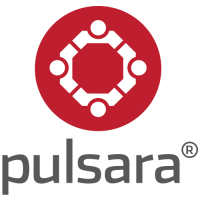This article originally appeared in “What paramedics want in 2023.”
Content provided by Pulsara
With staff retention emerging as a top concern in EMS, the need for effective solutions to combat this critical issue is apparent. As revealed by the 2023 EMS Trend Survey – a joint effort of EMS1, Fitch & Associates, EMS Survey Team and the National EMS Management Association – retention, recruitment and career development significantly influence the effectiveness of EMS services.
Numerous factors play a role in these challenges, with compensation, leadership quality, late calls and hospital wait times being the key issues. With a staggering 87% of respondents citing compensation as a major influence on retention, followed by poor leadership (72%), late calls (66%), hospital delays (53%) and the criminalization of medical errors (40%), the complexity and depth of the problem become evident.
However, these hurdles aren’t insurmountable. Innovative strategies such as wellness programs, alternative service models and technology solutions can help reduce irritations, bolster employee satisfaction and improve staff retention.
In the midst of these advancements, Pulsara, a patient logistics and communication platform, may contribute to the solution. Pulsara’s chief growth officer, Kris Kaull, emphasizes the transformative role technology plays in alleviating stress and boosting satisfaction among EMS providers. “People think of paramedics as lifesavers, but really, we’re simply fantastic at bringing order to unplanned circumstances,” he said. “If the right system is in place, you can not only endure, but thrive during moments of chaos.”
TRADITIONAL BARRIERS ARE CRUMBLING
Pulsara is among the forefront of technological advancements in EMS. Agencies increasingly adopting these innovations support the notion that technology plays a pivotal role in enhancing service delivery, reducing job frustrations and improving retention.
Consider telemedicine: 44% of agencies have yet to embrace it. That’s down from 71% in 2021. The shift toward technology adoption is mirrored across other service models too, such as nurse triage of 911 calls, with nonadoption rates dropping from 84% in 2021 to 56% this year.
Alternative support methods and destinations are similarly gaining traction. With advancements like Pulsara, traditional barriers are crumbling, paving the way for a more coordinated, efficient and satisfactory working environment.
The value of Pulsara becomes even more apparent in emergency situations. In large-scale emergencies such as mass-casualty incidents (MCIs), multiple-patient incidents (MPIs), natural disasters and public health crises, Pulsara’s unique functionalities enable quickly scaled emergency responses.
Pulsara’s MED OPS package provides three crucial functionalities: care scalability, networked communication and enhanced mutual aid. These features allow Pulsara to efficiently manage routine transports, transfers, transitions of care and coordinate distributed teams across organizations during time-sensitive emergencies like STEMIs, strokes, burns and trauma.
The ability to quickly scale up during MCIs, fires, hurricanes, evacuations, pandemics and other major events while connecting all members of the care team across organizations is a game-changer. Mutual aid coordination is also enhanced, providing a solution that extends beyond traditional referral patterns, allowing entire states and regions to synchronize communication and patient-level details instantly.
THE PATIENT TRACKING NUT IS CRACKED
Pulsara’s incident management platform presents a unique solution for large-scale events. Its system for scanning unique patient identifiers such as patient wristbands or triage tags enables real-time tracking of patient conditions and treatment updates. This streamlined process gives incident command the ability to monitor the number, status and severity of patients through an easy-to-navigate patient dashboard.
This high level of organization and clarity is not just critical during mass-casualty incidents. In everyday, single-patient cases, a quick scan of a patient’s wristband provides a comprehensive view of the patient’s information, as well as the communication that has already taken place. All interventions, from labs and vitals to medications administered and even time stamps, are easily accessible in real time.
In situations involving multiple patients, or when a patient’s identity is unknown, scanning a wristband ensures the EMS provider is coordinating care for the correct patient. In large public events, the system allows first aid stations to track the care provided to each patient, ensuring that should a patient need transport, the responding EMS agency and receiving hospital have instant access to the patient’s care information.
The transparency offered by Pulsara’s system significantly simplifies mutual aid, as responders from any organization can scan wristbands to instantly understand each patient’s condition and continue care where others left off.
Moreover, the platform’s ability to provide an incident summary allows providers to quickly understand how many patients are involved, their conditions and their current statuses. Hospitals receive notifications about incoming patients, allowing them to prepare and respond accordingly, ultimately enhancing the efficiency of patient care and reducing hospital delays.
“We have cracked the nut on patient tracking,” said Corey Ricketson, Pulsara’s vice president of sales for Texas. “When everyone has shared awareness, it creates a more efficient response to an incident. That way, we know how many patients we have and what their triage colors are, and we can distribute them to hospitals. We have solved a problem that has perplexed the industry for decades.”
TECHNOLOGY SOLVES LONGSTANDING PROBLEMS
The adoption of Pulsara by EMS agencies represents a significant shift toward innovative, technology-driven solutions to longstanding issues in EMS. As we look to the future, it’s clear the integration of tools like Pulsara could be instrumental in boosting EMS provider satisfaction, enhancing patient care and improving retention rates.
With the transformative power of technology, EMS agencies can enhance their services and contribute to safer, healthier communities. The road to improving EMS retention might be steep, but with solutions like Pulsara, we’re well-equipped for the journey.
For more information visit Pulsara.












